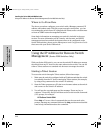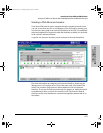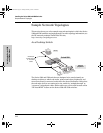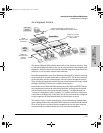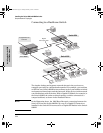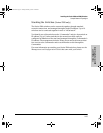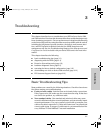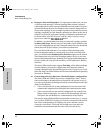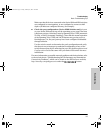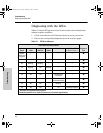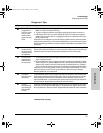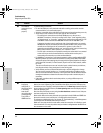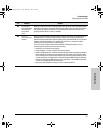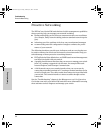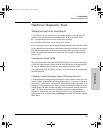
3-2
Troubleshooting
Basic Troubleshooting Tips
Troubleshooting
■ Improper Network Topologies. It is important to make sure you have
a valid network topology. Common topology faults include excessive
cable length and excessive repeater delays between end nodes. If you have
network problems after recent changes to the network, change back to
the previous topology. If you no longer experience the problems, the new
topology is probably at fault. Sample topologies are shown at the end of
chapter 2 in this book, and some topology configuration guidelines can
be found online at the HP ProCurve web site, http://www.hp.com/go/
hpprocurve under the
button.
In addition, you should make sure that your network topology contains
no data path loops. Between any two end nodes, there should be only
one active cabling path at any time. Data path loops will cause broadcast
storms that will severely impact your network performance.
For your Series 2500 switches, if you wish to build redundant paths
between important nodes in your network to provide some fault toler-
ance, you should enable Spanning Tree Protocol support on the switch.
This ensures that only one of the redundant paths is active at any time,
thus avoiding data path loops. Spanning Tree can be enabled through the
switch console, the web browser interface, or HP TopTools for Hubs &
Switches.
The Series 2500 switches also support Trunking, which allows multiple
network cables to be used for a single network connection without
causing a data path loop. See the Management and Configuration Guide
that came with your Series 2500 switch for more information on Spanning
Tree and on Trunking.
■ Connecting to devices that have a fixed full-duplex configuration.
The Series 2300 and 2500 RJ-45 ports are configured as “Auto”. That is,
when connecting to attached devices, the switch will operate in one of
two ways to determine the link speed and the communication mode (half
duplex or full duplex):
• if the connected device is also configured to Auto, the switch will
automatically negotiate both link speed and communication mode
• if the connected device has a fixed configuration, for example 100
Mbps, at half or full duplex, the switch will automatically sense the
link speed, but will default to a communication of half duplex
Because the Series 2300 and 2500 switches behave in this way (in compli-
ance with the IEEE 802.3 standard), if a device connected to the switch
has a fixed configuration at full duplex, the device will not connect
correctly to the switch. The result will be high error rates and very
inefficient communications between the switch and the device.
2353-ed2.book Page 2 Friday, February 9, 2001 6:00 PM



